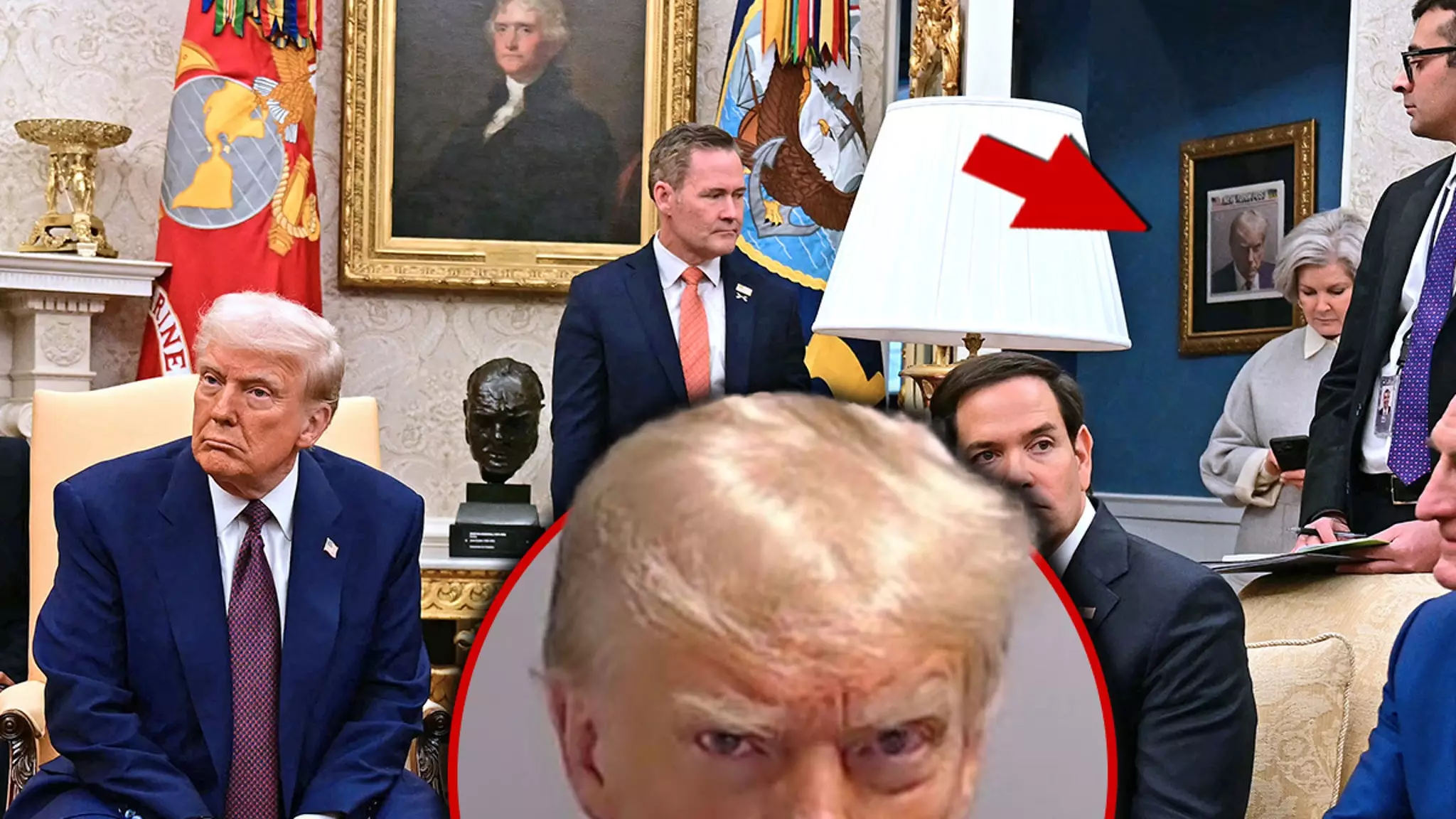In a move that many have found both audacious and controversial, President Donald Trump has marked his second term by introducing an unexpected element to the iconic Oval Office—his own mug shot. This act not only encapsulates a profound sense of defiance but also serves as a bold statement about personal branding and the redefinition of presidential decorum. At a time when traditional decorum typically emphasizes portraits, accolades, and symbols of legacy, Trump’s decision to prominently display his mug shot challenges the established norms of what can be celebrated in the highest office of the land.
The backdrop of this unusual display gained attention during a recent meeting with India’s Prime Minister Narendra Modi. Photographers captured numerous moments of their interaction, yet it was the striking contrast of Trump’s mug shot against the historic and stately decor of the Oval Office that truly stood out. Within the same frame as the famous Resolute desk, a framed portrayal of the unique and contentious image offered a stark juxtaposition to the traditional presidential imagery, such as Thomas Jefferson’s portrait hanging nearby. This arrangement of contrasting symbols paints a portrait of a leader unafraid to draw lines between past and current grievances.
Mug Shot as Merchandise and Media Strategy
Trump’s mug shot, captured after his indictment in Georgia, has transcended the realm of a mere photograph to become a potent emblem of his narrative of victimhood. Since the 1980s, Trump has effectively harnessed media to cultivate his image, and now, this particular image has transitioned into a merchandise goldmine. By marketing items featuring the mug shot, Trump has ingeniously combined fundraising with personal branding, transforming a moment of legal trouble into a rallying point for his supporters. In doing so, he not only reinforces the idea of persecution but also galvanizes his base around a shared adversarial theme.
The decision to hang the mug shot just outside the Oval Office poses intriguing questions regarding its intent. Some interpret this act as a potential intimidation tactic, an exhibition of defiance to set the tone before meetings, implying that anyone entering the space should recognize the president’s resilience against perceived injustices. On the other hand, it could also symbolize empowerment, showcasing a leader who perceives himself as embattled yet undeterred. Regardless of interpretation, this choice speaks volumes about Trump’s ethos—one that embraces controversy as a tool for political capital.
The unconventional act of displaying a mug shot in the Oval Office highlights the evolving landscape of American political life. What used to be a space reserved for dignity and historic legacy is now also a platform for personal narrative and defiance. Donald Trump’s broadening of the presidential image is a telling reflection of how leaders may choose to navigate the complex currents of public perception and political identity in contemporary society. As presidents of the future take their place in this historical context, Trump’s presidency may well be remembered not only for its policy decisions but also for its radical reinterpretation of what it means to occupy the Oval Office.

